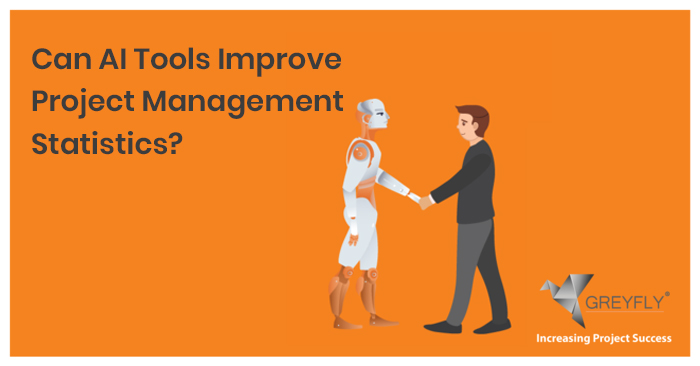- October 24, 2019
- Posted by: Courtney Armstrong-Clark
- Category: A.I.

The holidays are right around the corner, so it is a great time to review and analyse stats. After all, project management has started shifting from not just techniques but tools too. This change is inevitable but what is the impact of these changes?
Stats not only help us understand the current state of project management but also help us identify the reasons behind project success or failure. According to some project managers, sometimes it is the breakdown in communication that leads to project failure but what are the absolute numbers? The multiple resources and millions of dollars spent on new projects every day, here’s a list of stats that define the current state of project management.
PM Stats Related to Project Failure and Success

- Real-time project KPIs define the current status of the project and the fact that 55% of companies do not have access to them defines why 70% of projects are likely to fail.
- Over-budget accounts for 27% of projects that fail whereas this rises to 50% of projects with a budget of over a million US dollars fail too.
- Undefined project objectives and milestones result in 37% of project failures.
- 44% of projects fail due to the lack of alignment between project and business objectives.
- 47% of projects collapse due to poor management of requirements.
- According to Enkillc, poor scalability, inconsistent execution, and lack of continuous team improvement are the three main causes of project failures.
- 94% of organizations agreed that project management is vital for business growth.
All the statistics mentioned above define that project failure is commonplace. However, will they be avoided with a streamlined and well-defined project management system that can identify and minimize risks, streamline workflow, and define roles and responsibilities? The odds of project success escalate if companies can leverage the best project management practices.
Industry-Based Project Management Stats

- 93% of communication service providers use agile PM methodologies.
- According to SUNY Polytechnic Institute, complexity and scheduling are major sources of risk in telecommunication project management. They further reported that minimizing the overlapping of activities and dependencies as well as automation in repeated tasks can minimize risks and save time.
- The health sector of the US has witnessed a 17% increase in project-oriented jobs. Whilst another study from PMI revealed that only 4% of physicians have a fully-functional, extensive Electronic Health Records (EHR) systems.
- 25% of managers believe that the business team is always “out of sync”.
- According to Deloitte, 80% of federal IT projects in 2017 were self-described as ‘Agile’ and ‘iterative’.
- According to Gallup, 5% to 15% of IT projects always fail. Another study from Gartner reported that IT projects with a budget of around $1 million have a 50% more failure rate as compared to projects with $350,000 or low budget.
The above stats reveal that while different industries have different stats for project failure and success, the core of every industry demands perfect project management.
How AI in Project Management Can Change These Statistics

According to Gartner, AI will eliminate 1.8 million jobs across all industries by 2020. However, it will also produce 2.3 million new roles in the same period. Gartner also reported that AI will bring $2.9 trillion worth of business value by 2021. Artificial Intelligence will not only automate certain processes but will increase revenue across industries too.
As mentioned above, 55% of companies do not have access to real-time KPIs which has a huge impact on project success. Leveraging AI for data analytics and machine learning can lead to more efficient project plans based on past performance. Projects are failing due to poor management of requirements. AI in project management has the ability to identify risks, trends, and indicators that can later turn a threat to project success. AI tools have the ability to streamline processes, analyse data, and illuminate bottlenecks that are otherwise hidden to project managers. Proactive actions and decisions due to AI in project management can help minimize cost-related issues since a number of unexpected issues can be avoided if reported timely.
- Use of AI on enterprise-level has increased in the past few years. A report from Gartner has revealed that enterprise-level use of AI has witnessed 270% of growth in the last four years.
- AI is breaking into mainstream project management. Accenture reported that administrative tasks take 54% of a project manager’s time and analysts believe that AI can halve that figure.
- 86% of project managers that welcome AI technology and among those who have adopted AI witnessing an increase of 20% in project performance (Cognilytica,2019)
- A survey from MIT Sloan found that 63% of businesses take an interest in AI due to cost reduction.
- According to a survey from Econsultancy/Adobe, 28% of top-performing companies are already leveraging AI to offer more compelling real-time experiences whereas 29% are planning to do so.
Conclusion
Project management has a significant place in multi-billion industries. The above statistics reveal that irrespective of the industry, the lack of efficiency leads to project failure. The introduction of AI in project management will help to streamline projects and improve these project success stats in the future.
